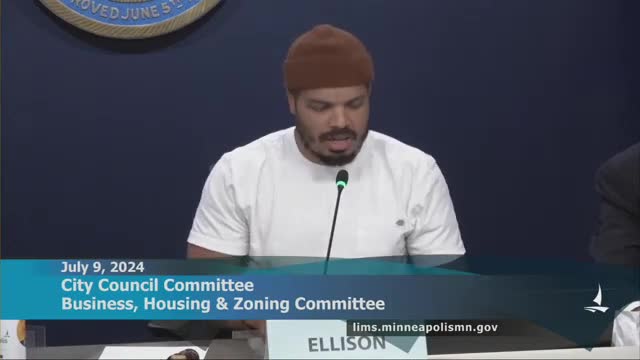Council debates controversial light pole height increase
July 10, 2024 | Minneapolis City, Hennepin County, Minnesota

This article was created by AI summarizing key points discussed. AI makes mistakes, so for full details and context, please refer to the video of the full meeting. Please report any errors so we can fix them. Report an error »

In a recent city council meeting, officials discussed an appeal regarding a conditional use permit for Minnehaha Academy to increase the height of light poles at its athletic field. The proposal seeks to raise two poles to 70 feet and two to 80 feet, significantly above the current limit of 35 feet. This appeal follows a planning commission decision made on June 10, which approved several applications related to the academy's Deerfield project, including the light pole height increase.
Hillary Dvorak, a principal planner from the City Planning and Economic Development (CPED), presented the case, emphasizing that the increased height would not compromise public health or safety. The proposed lighting design aims to minimize glare and light spill into surrounding residential areas, with full cutoff fixtures directing light downward. Dvorak noted that illumination studies indicated that taller poles would actually reduce light spill, enhancing safety for athletes while complying with city regulations.
The appeal was brought forth by local residents, including Somya Verma, who expressed concerns about potential noise and light pollution from the athletic field, particularly if the lights are used for events beyond school activities. Verma and other residents requested modifications to the permit, including an earlier cutoff time for lights and restrictions on third-party rentals of the field.
Minnehaha Academy representatives, including President Donna Harris, argued that the lights are essential for accommodating later games, which would allow students to participate fully without missing class time. They highlighted that many other schools in similar residential areas have successfully implemented high field lights without adverse effects.
The council members engaged in discussions about the implications of the proposed changes, weighing the benefits of enhanced athletic facilities against the concerns of local residents. The meeting concluded with a public hearing, where community members voiced their opinions, reflecting a mix of support for the lights and apprehension about their impact on the neighborhood.
As the council deliberates, the outcome of this appeal could set a precedent for future developments in urban residential areas, balancing community needs with institutional growth.
Hillary Dvorak, a principal planner from the City Planning and Economic Development (CPED), presented the case, emphasizing that the increased height would not compromise public health or safety. The proposed lighting design aims to minimize glare and light spill into surrounding residential areas, with full cutoff fixtures directing light downward. Dvorak noted that illumination studies indicated that taller poles would actually reduce light spill, enhancing safety for athletes while complying with city regulations.
The appeal was brought forth by local residents, including Somya Verma, who expressed concerns about potential noise and light pollution from the athletic field, particularly if the lights are used for events beyond school activities. Verma and other residents requested modifications to the permit, including an earlier cutoff time for lights and restrictions on third-party rentals of the field.
Minnehaha Academy representatives, including President Donna Harris, argued that the lights are essential for accommodating later games, which would allow students to participate fully without missing class time. They highlighted that many other schools in similar residential areas have successfully implemented high field lights without adverse effects.
The council members engaged in discussions about the implications of the proposed changes, weighing the benefits of enhanced athletic facilities against the concerns of local residents. The meeting concluded with a public hearing, where community members voiced their opinions, reflecting a mix of support for the lights and apprehension about their impact on the neighborhood.
As the council deliberates, the outcome of this appeal could set a precedent for future developments in urban residential areas, balancing community needs with institutional growth.
View full meeting
This article is based on a recent meeting—watch the full video and explore the complete transcript for deeper insights into the discussion.
View full meeting
